How to Choose an SSD on a Flash Sale
What SSD should you buy? In normal times, we'd simply tell you to follow our Best Storage guide. Just during wink sales, like in Blackness Friday or the holidays, recommendations that are based on normal prices become somewhat irrelevant since the best deals frequently go to bottom known drives (models, capacities, etc.), which may exist worth buying at a healthy discount.
In that scenario, y'all may exist faced with several questions such as... is QLC equally proficient as TLC? Do SSDs actually need DRAM? Why do SSDs have different shapes? Does the SSD's chapters bear on its performance? This short guide will guide you to learn the bones differences between all types of consumer SSDs, and then when you see an SSD on a sale, yous'll know whether information technology's a good buy for y'all.
NVMe vs. SATA SSD
The interface of the SSD determines not only transfer speeds, but whether you'll be able to install information technology in your system. For years, SSDs used the same SATA interface every bit difficult drives, and were either like in form/shape to 2.5" drives that were used in laptops; or used the more compact mSATA course factor, which was similar to Mini PCIe used by devices such as network cards.
With SATA three.0 becoming a limitation to transfer speeds at about 560MB/s, the NVMe interface is effectively replacing it, connecting to the CPU straight, or through the motherboard'southward chipset with several PCIe lanes, for much faster speeds.
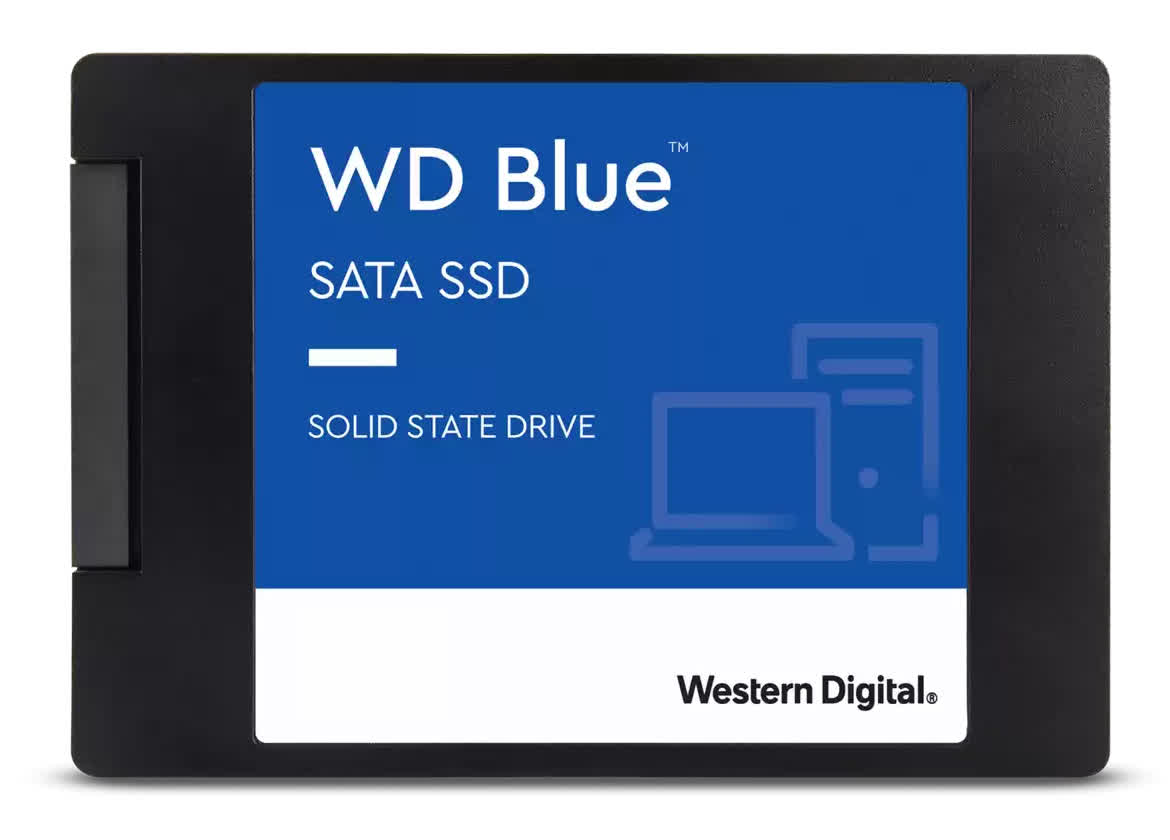
Many motherboards accept more connectors than they can utilize at the same time, and so regardless of your option of SATA or PCIe, you lot should cheque whether using a connector in that fashion would disable some other one that you need.
The Crucial MX500 is about equally skilful every bit a SATA drive can exist. If you desire an NVMe bulldoze, the Western Digital Blackness SN_750 currently offers great value.
Add-In Card vs. M.2 SSD
Almost SSDs today, SATA and NVMe, apply the M.ii form factor, which supports up to four PCIe lanes for an NVMe SSD.
With M.ii, PCIe 3.0 SSDs enable transfer speeds of up to 3,500 MB/s, while PCIe iv.0 SSDs relish speeds of up to 7,000 MB/s, every bit long as your CPU and motherboard support the faster fourth-gen interface.
Most M.ii SSDs are notched according to the M fundamental, which supports upwards to four PCIe lanes and SATA. Some older motherboards have One thousand.2 slots that support the B cardinal and only ii PCIe lanes in addition to SATA.
Near SSDs that use SATA or two PCIe lanes are double-notched according to both keys for compatibility, though...
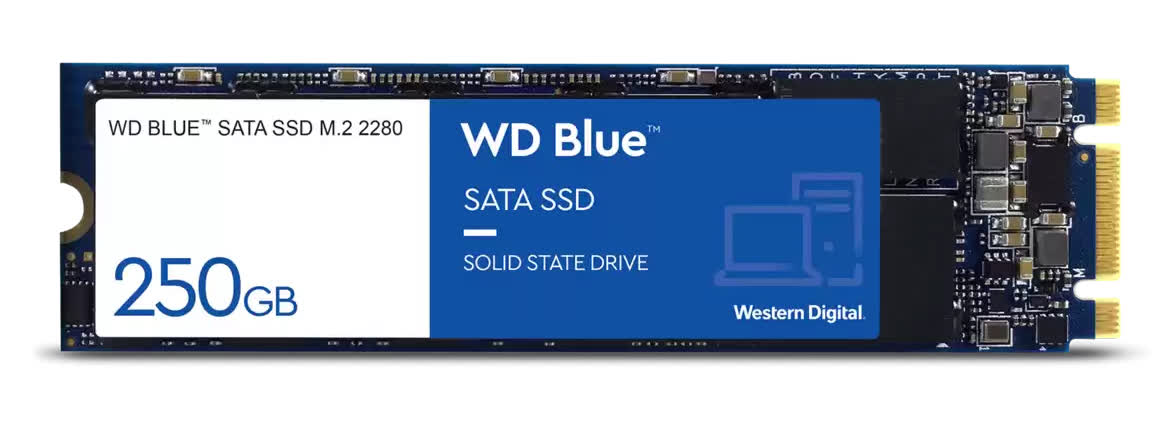
All Thousand.2 SSDs are 22mm wide. The most common ones are 80mm long, and called "2280." Laptops, and more often than not ultrabooks, sometimes merely accept the space for 42mm-long SSDs, called "2242." Tablets such as the Surface Pro 8 use 30mm-long SSDs ("2230"). SSDs that are 60mm long ("2260") are widely supported, but not common. The few that are 110mm long ("22110") are not supported by mainstream devices.
Equally an culling to 1000.two, some PCIe SSDs come in the grade of add-in cards, looking similar small graphics cards and installed similarly. The larger form gene tin can make up for a motherboard'south lack of PCIe four.0 support by using eight PCIe 3.0 lanes, or accommodate a more powerful controller that needs amend cooling. Another alternative is a 2.v" U.2 SSD, which can exist connected to an M.2 slot with an adapter cable.
Western Digital's AN1500 is probably the fastest SSD when fastened to a PCIe 3.0-simply motherboard or CPU. If your arrangement supports PCIe iv.0, then Samsung'south 980 Pro is a elevation pick.
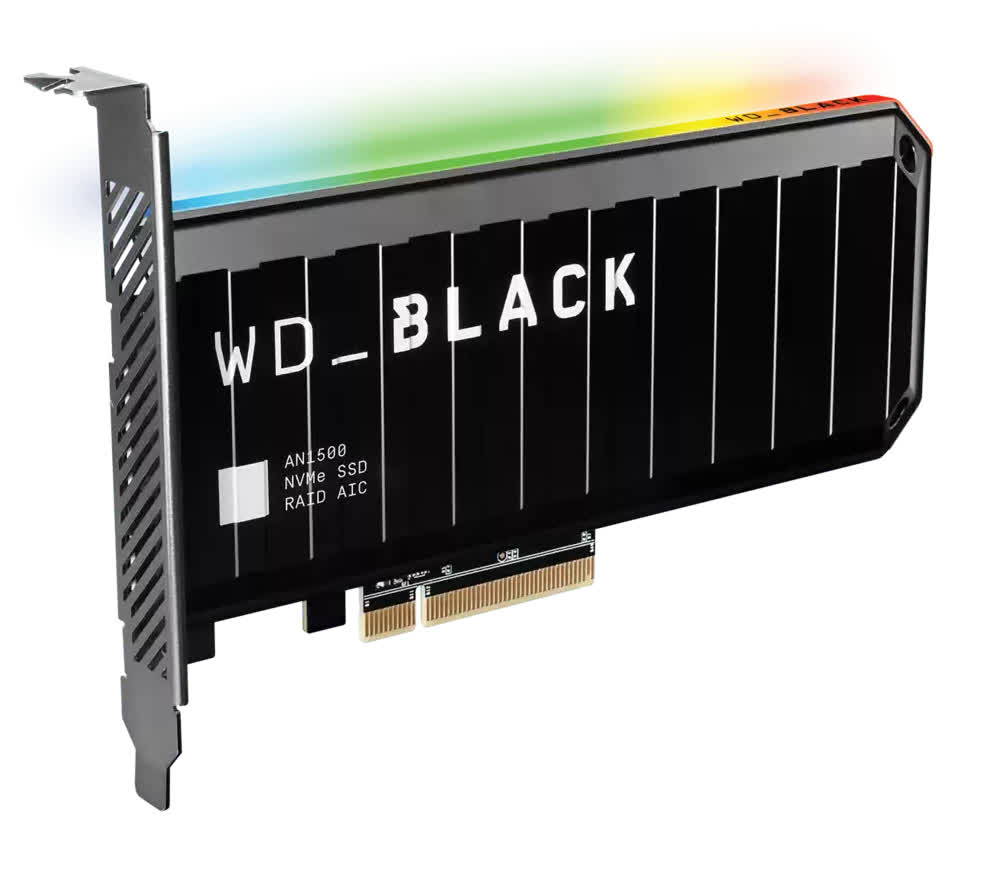
QLC vs. TLC SSD
In mod SSDs, the cells of the wink chips are made of levels, with each level storing a bit (0 or 1) of data. About SSDs today use either tri-level cells (TLC) or quad-level cells (QLC). The term "multi-level cells" (MLC) was originally used to describe dual-level cells, simply the term "3-level MLC" used by Samsung simply means TLC.
Adding levels to cells allows them to shop exponentially more information in the same physical infinite, but also makes them exponentially slower to write to. The proficient news is, yous won't find that immediately thanks to smart caching mechanisms.
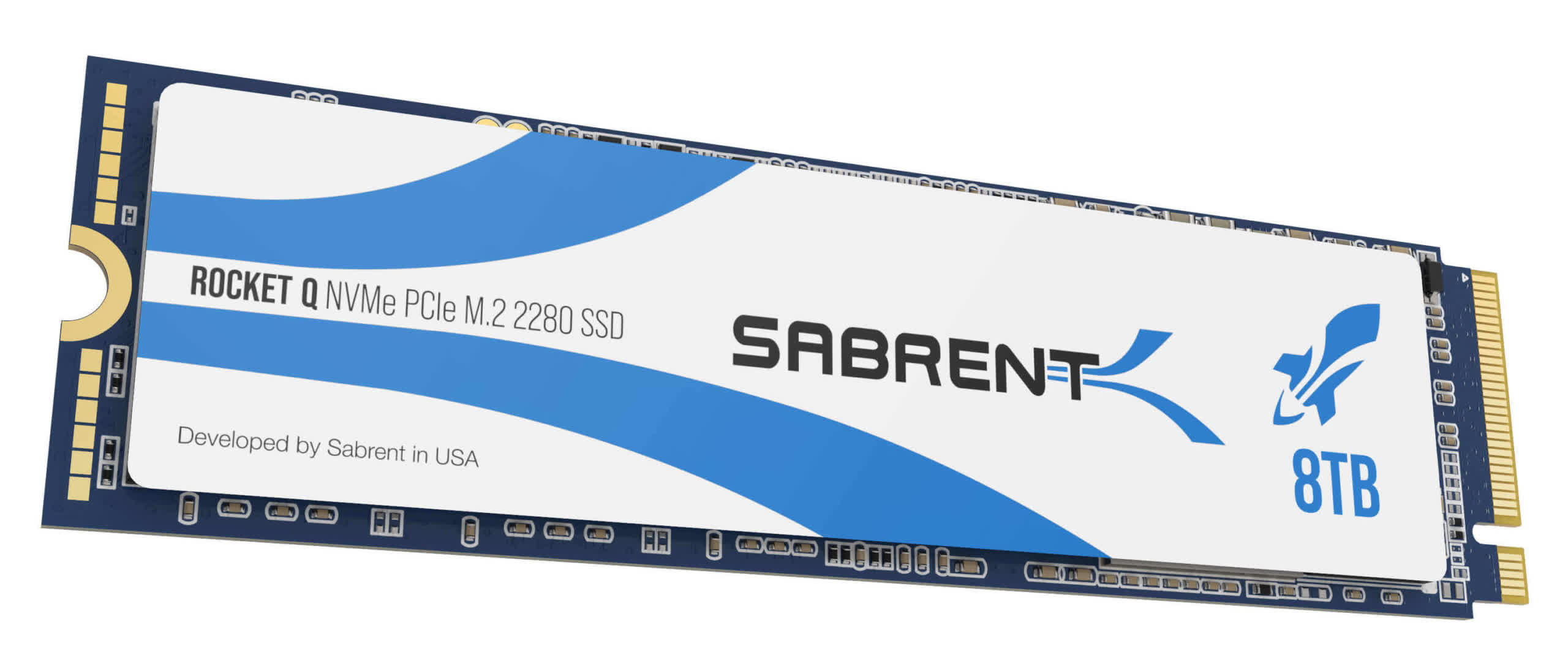
Nearly SSDs utilise a portion of their free storage space as a cache of virtual single-level cells (SLC) by writing merely to the first level of the cells. Once the cache depletes, the bulldoze degrades to its "native" writing speed. In the case of QLC, that speed might be similar to that of a hard drive.
Whether it has QLC or TLC, the less free space your SSD has, the smaller its SLC cache volition be, and the shorter the time for which information technology will be able to sustain its peak writing speed.
If you really need an 8TB SSD, and so the Sabrent Rocket Q is the best choice for you lot. If you tin get by with 4TB or less, the company's Rocket 4 Plus volition perform more consistently thanks to its TLC flash.
DRAM-Less vs. DRAM-Equipped SSD
In order to map where data for each file is physically stored within flash chips, about SSDs rely on their own local RAM – typically 1MB of RAM for every GB of storage infinite – just that isn't always the case.
NVMe SSDs frequently apply the host-memory buffer (HMB) to utilize some of the system'southward RAM for the task. In shorter Grand.2 SSDs, that may be done in order to save concrete space. In larger SSDs, the purpose is to salvage costs.
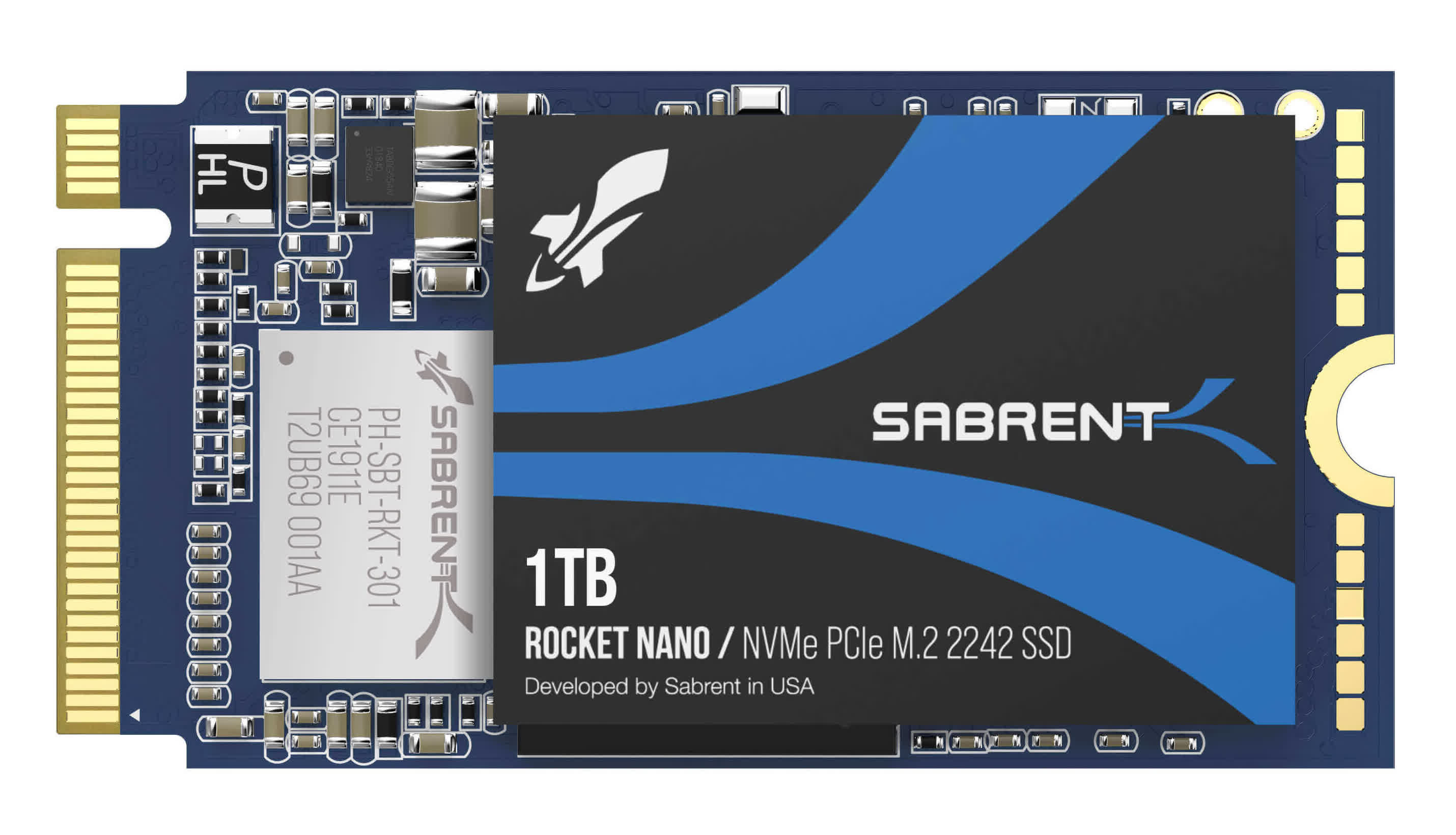
When a drive that uses HMB is nearly empty, the lack of on-lath DRAM won't hurt its operation noticeably. If you store hundreds of GBs of data on it, however, the speed at which information technology finds files can become several times slower (but still many times faster than a hard drive).
With SATA SSDs, things are more complex. Instead of the principal system's RAM, DRAM-less SATA SSDs use their own flash chips, which are much slower than any kind of RAM. In addition, storing the e'er-irresolute alphabetize of all of your data on the flash fries can make them wear out more quickly and hurt the device's life span. For that reason, we can only recommend a DRAM-less SATA SSD as a temporary solution.
If y'all are looking for a brusk NVMe drive, so Sabrent'southward DRAM-less Rocket Nano is your best bet. Instead of buying a DRAM-less SATA drive, you lot should await for something like the Western Digital Bluish SSD (2018), which is never far behind the best SATA drives, and oft cheaper on sales.
250GB vs. 500GB SSD
In the past year, the demand for low-cost PCs for working from home has fabricated 250GB SSDs almost as expensive as their 500GB versions. During a flash sale, notwithstanding, a 250GB SSD tin suddenly price the same per GB as a similar bulldoze with double the capacity. The question is, volition the 250GB drive exist a good value in that situation?
That may not be the case for two reasons: 1) even if they apply the same per centum of their gratuitous space as SLC cache every bit higher-capacity drives, smaller drives notwithstanding have smaller SLC caches to begin with. 2) Considering they utilize less wink chips, they may not take full advantage of a controller that was designed to write to several chips simultaneously.

In NVMe drives, you may notice it immediately: for example, the Samsung 980's (non-Pro) 250GB version is rated for a summit writing speed of i,300MB/s, while the 500GB version is rated for double that speed.
In SATA drives, you may simply see the difference after the SLC enshroud fills up. The Crucial MX500 250GB and 500GB versions both kickoff long writes at about 450MB/due south, simply when their SLC caches are full, the 250GB version drops to 200MB/s, while the 500GB i stays at a respectable 400MB/south.
If you want a good 500GB SSD for an affordable price, consider the Samsung 980 (non-Pro). Instead of buying the 250GB version, you should expect into something like the 500GB version of Western Digital's Blue SN550 for a similar price.
Source: https://www.techspot.com/article/2362-ssd-flash-sale-guide/
Posted by: foxbuit1936.blogspot.com


0 Response to "How to Choose an SSD on a Flash Sale"
Post a Comment